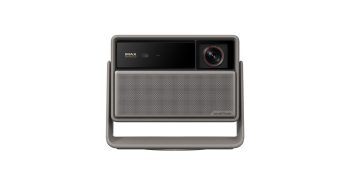The Adventure Company’s, The Experiment, places the gamer in the role of an amnesiac in an abandoned research vessel’s security control room. On the monitors in front of you, there is a woman lying in a cot hooked up to an iv. Suddenly, she wakes up and starts exploring her small room. After noticing the security camera (through which you are looking) as being active, a symbiotic relationship is borne as she enlists your help in escaping the research vessel. Your interface is in the guise of a surprisingly realistic application program with login boxes, buttons, and icons. You can pull up area maps of your partner’s location as well as log into the computer mainframe to get personnel files – barring you have the right username and password. The game can be exceptionally challenging at times, so beware, you may be frustrated at several points. This is definitely a ‘real’ adventure gamer’s game.
From the area map you can select up to three security cameras to look through at one time. Cameras are able to be panned, zoomed, and even have alternate vision modes such as night vision and thermal settings. You can drag and resize the security camera windows to your liking which also adds to the ‘application’ aspect of your interface. From the area map, you can also activate and deactivate objects such as lights, computers, and more. This has multiple purposes, the first of which is to turn the object on for it to function, of course. The second reason brings us to what must have been one of the major hurdles for the developers in The Experiment: How to control the female character on the monitors?
Controlling the good doctor (she was a researcher on board) is done by making a light source or other device activate. Once activated, the doctor will walk over to that object. If it is a usable device, she will do so. She will also ask you questions from time to time which require a ‘yes’ or ‘no’ response. When that is necessary, you actually have to make a security camera nod ‘yes’ or ‘no’. As ingenious as this control scheme is in making you feel like you are actually using a security system and communicating with this woman, it is not without fault. The good doctor sometimes has issue responding to object activations if she is already moving to a target. Also, I have seen her not move to an activated object at all for some reason even while doing nothing.
Voice acting in the game is not all that great and sometimes just comes off as plain bad. However, musically, the game is excellent. The composer, who’s name I do not have at the moment, did an excellent job constructing an eerie atmospheric score. Graphically, the game is fine. It wont be breaking any new ground but it is pretty enough for what it has to be. What is even more important are the camera views. These security cameras are not supposed to be state-of-the art devices anymore. Some will be out of focus, others with random artifacts (some wont even be able to move anymore). These filters really add to the game visually and trick you into not thinking about the graphics not being the ‘latest and greatest’.
Conclusion:
Overall, I found The Experiment to be a very rewarding and challenging adventure/puzzle game which manages to create a hodgepodge of voyeurism, lateral thinking, and atmosphere that will surely give you the willies if played by yourself in a dark room.




